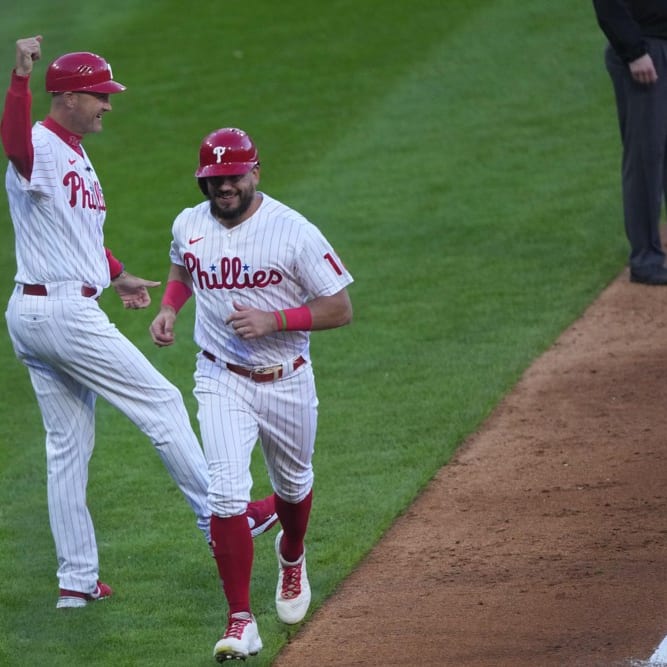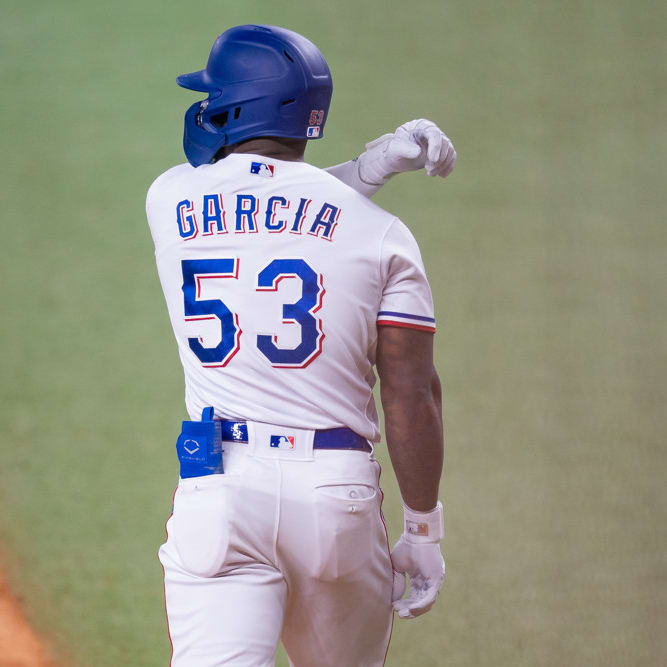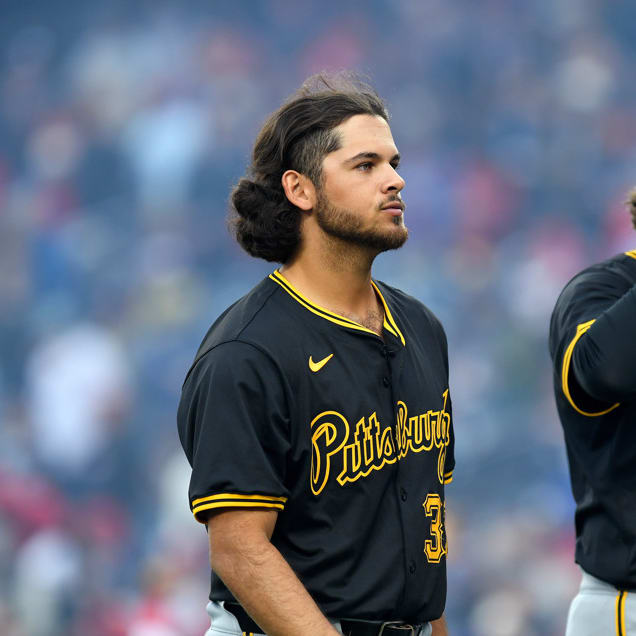This article is part of our Scouting Pitchers series.
Statistics through 6/7/09
This week, we'll check out two right-handers who are likely to make NL hitters miserable over the next decade. Johnson has bounced back well from 2007 Tommy John surgery to emerge as an elite starter. He is one of the early front-runners for Cy Young consideration. Strasburg will be drafted this week by the Washington Nationals, who will have roughly 65 days to sign the flamethrower that many are calling the greatest amateur pitcher ever. They will be under enormous pressure to sign Strasburg, Thomas Boswell writes.
The Marlins drafted the right-handed Johnson (6-7, 252, Born 1/31/1984) with a fourth-round pick in 2002 from an Oklahoma high school. After battling some minor shoulder and hip problems that year, Florida brought him along slowly in Class A in 2003 (82 innings, 3.61 ERA) and 2004 (114 innings, 3.38 ERA). In 2005, Johnson hopped on the fast track to the majors by going 12-4, 3.87 at Double-A, with 113 strikeouts in 140 innings. He received a cup of coffee with the Marlins in September and won a spot on the club the next spring, skipping Triple-A.
Johnson worked in relief in April 2006, was moved to the rotation on May 5, and was the best pitcher in the National League for the next four months. After his August 28 start, his 2.87 ERA led the NL. Warming up twice on September 12 when interrupted by a rain delay may have contributed to a forearm strain, as he did not pitch again that year. Johnson finished fourth in the NL Rookie of the Year voting, with teammates Hanley Ramirez and Dan Uggla finishing first and third.
Johnson was felled by injuries in 2007. He had right biceps soreness early in camp, then was diagnosed in March with a nerve irritation in the biceps, keeping him out until June. He threw five shutout innings in San Diego on July 4, but left with forearm stiffness. By late July, this became elbow stiffness, and Johnson had Tommy John surgery on August 3.
Johnson worked his way back quickly in 2008, as he started his rehab at Class A on June 19 and took the mound against the Dodgers on July 10. He lost just once in his 14 starts, going 7-1, 3.61 in 87.1 innings and not reporting any physical problems. In 2009, Johnson has been one of the best pitchers in the NL, as he currently ranks second in innings (82), winning percentage (.833) and WHIP (1.06), and seventh in strikeouts (72) and ERA (2.63). He didn't feel well after his May 9 start in Denver, struggling with his velocity in Milwaukee on May 14, but has bounced back nicely since.
Josh Johnson: (G/F 1.21)
Rating: %Thrown: Fastball 75 65 Curveball N/A Slider 70 25 Changeup 55 10 Control 60 Delivery 50 Composure 60 Johnson brings a four-seam fastball from 92-97 and an 82-89 mph slider. He also throws occasionally a low-90s two-seamer and an 86-89 mph changeup. Johnson works very fast and uses his height to keep the ball down in the strike zone. He has increased his G/F ratio this year to 1.27. Johnson busts both left-handed and right-handed hitters inside. He gets weak grounders and pop-ups by coming in with both his fastball and slider. Only strong right-handed hitters such as Ryan Braun and Evan Longoria can do much with his fastball on the hands. Johnson can elevate the ball for a strikeout, but when he misses, it is usually down.
Johnson's command of his fastball to the outer part of the plate isn't as good as it is inside. His four-seamer doesn't have great movement, so his two-seamer might grow in importance down the road. His slider has excellent velocity and bite, and he controls it best in the middle innings. Johnson's changeup has some decent fade, and offers an important different look. He uses it against lefties, after he has been hit, or when it isn't a game situation. At crunch time, batters see four-seamers and sliders.
Johnson's aggressiveness and quick tempo generally put hitters on the defensive. They know he is likely to throw strikes, so often they go up there swinging. This translates into quick innings, and he ranks seventh among qualifying NL starters in pitches per inning (15.2). Johnson runs into trouble with his approach when he battles his command and doesn't step back to slow down the game. He has been very tough with runners on base (.206) and in scoring position (.161), so he can bear down when necessary.
Johnson's dropped-forearm, "tall and fall" delivery rates as average. He does keep his moving parts fairly integrated toward home plate, but can take an inning to get into sync. Johnson falls off the mound slightly but fields his position well, with just one error in his career. Basestealers are 26-for-41 (63%) against him in his career. Johnson can help himself with the bat, as he proved in his June 4 start by hitting a three-run homer to help himself beat the Brewers.
I missed the boat this year on Johnson. He doesn't have my type of motion, but has proven me wrong. Johnson ranks third in the NL in quality starts (10) and quality start percentage (83%). He has excellent stuff and doesn't back down to anyone - a good combination. I thought of him as another Dustin McGowan, but he's looking like Curt Schilling.
----------------------
The right-handed Strasburg (6-4, 220, Born 7/20/1988) has been the talk of the 2009 draft since he exploded onto the national scene by striking out 23 Utah hitters on April 11, 2008 for San Diego State. He is the consensus #1 pick in the draft and being discussed as the best college pitcher ever. Rumors have abounded that agent Scott Boras will seek $50 million to sign him. The industry consensus is that Boras will take Strasburg up until the August 15 deadline before taking $20 million.
Strasburg nearly missed it all. Undrafted out of West Hills (Ca.) High School, he had a good arm but a questionable makeup. Strasburg didn't take his conditioning seriously and ballooned to 250 pounds. He barked at umpires and teammates. Fortunately for Strasburg, he attended San Diego State, where strength coach Dave Ohton, pitching coach Rusty Filter and head coach Tony Gwynn molded him into shape. After being brought along slowly his freshman year, Strasburg struck out 133 in 2008, and fanned an amazing 195 in 109 innings this year. He threw a no-hitter against Air Force in his final home start on May 8.
Stephen Strasburg:
Rating: %Thrown: Fastball 80 65 Slurve 75 30 Changeup 50 5 Control 65 Delivery 50 Composure 65 Strasburg's four-seam fastball is regularly clocked at 94-98 mph, and he has reached 103. In his most recent starts, he was at 94-97. He reportedly throws a slider from 90-93, has a hard 78-82 mph curveball and a low-80s changeup. Strasburg has been working a sinking "one-seamer" fastball into his repertoire, he told Baseball America in March. He works quickly, throws strikes and is tenacious on the mound.
I admit some confusion about Strasburg's breaking pitches, or whether he is really throwing two of them. As Strasburg breaks down his stuff on this ESPN video, he says he throws a fastball, slider, changeup and sinker. ESPN's Keith Law says Strasburg throws a "curve that acts like a slider," saying it arrives at 84 - not 90. Strasburg shows a curveball grip when he demonstrates his slider in the above video.
It is possible that Strasburg is throwing a curveball from different angles, some of which act like a slider. Until I see Strasburg's 90 mph slider in person, I'm inclined to call his breaking pitch a slurve.
Scouts have struggled to find a comparable pitcher to Strasburg. Some have suggested A.J. Burnett, for the overpowering nature of both his fastball and breaking ball. Felix Hernandez and Justin Verlander were the last prospects who were this dominant. As a youth, Strasburg's favorite pitcher was Jake Peavy, and his top-heavy motion reflects this. Strasburg doesn't have the classic arm extension that one looks for in a pitching prospect, as he brings his arm through rather late. Yet the concern over his motion is more confined to the online fantasy community than with major league scouts, who have no problems with it.
When will we see Strasburg in the majors? Opinions differ on who has the upper hand in negotiations. Some say Strasburg, with the Nationals' pitching staff currently sporting a 5.51 ERA. Others speculate that Strasburg can't improve his status at all by returning to college, so he needs to sign by August 15. I would bet the Nationals will open the checkbook for him and have him in the majors for a few games in September.
There have been a lot of articles written lately about the flameout factor involved in top pitching prospects, such as this ESPN piece by Jim Caple. Yet each player, and pitcher, needs to be evaluated on an individual basis. Judging from his talent, personality and mechanics, Strasburg is as good as they come. I think we'll see a dominant career out of him - interrupted by an injury or two, as I'm not totally sold on his motion.
Next week: AL Central: Edwin Jackson
Article first appeared 6/9/09











